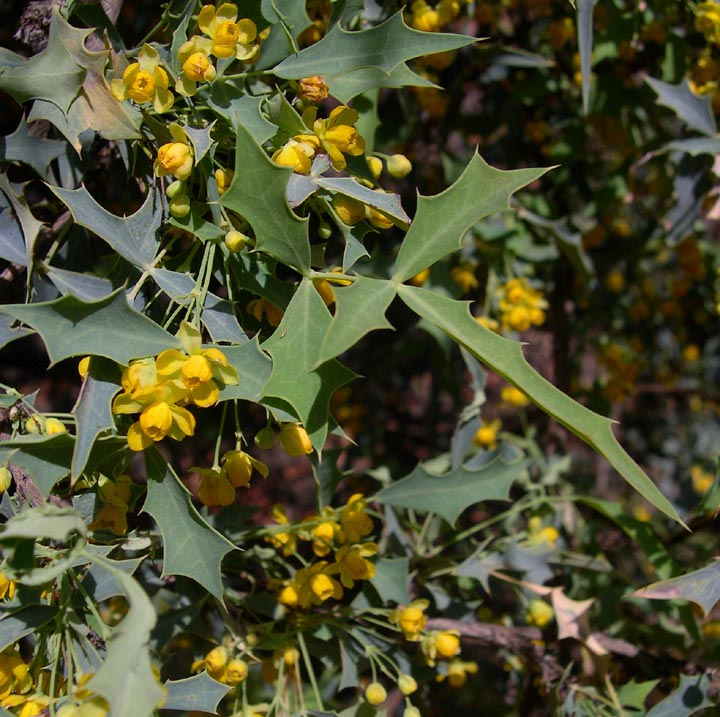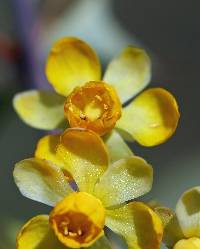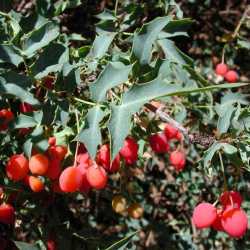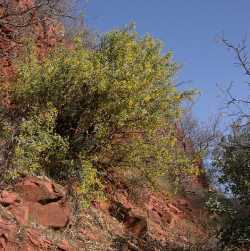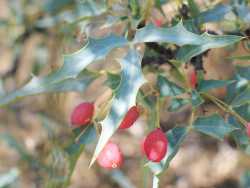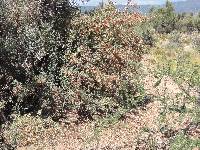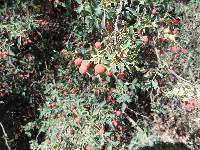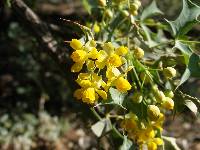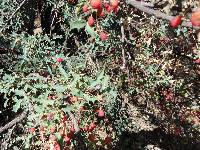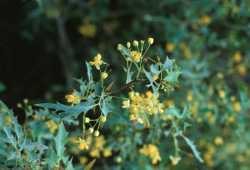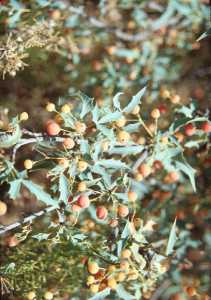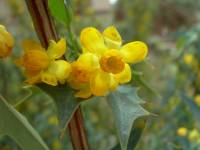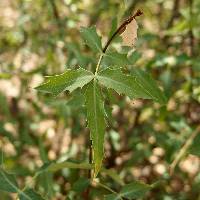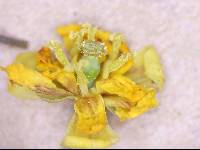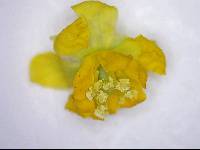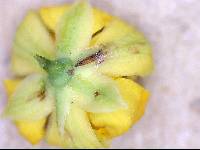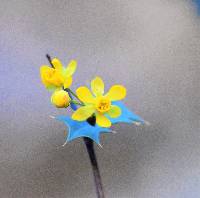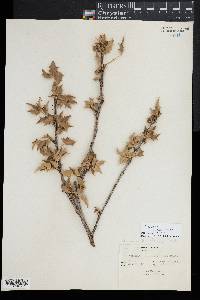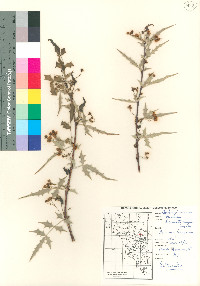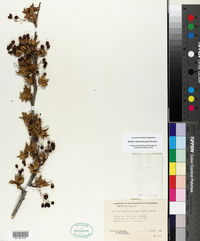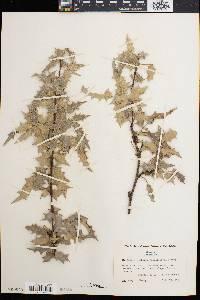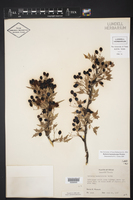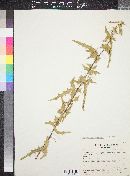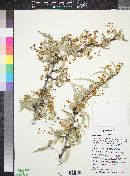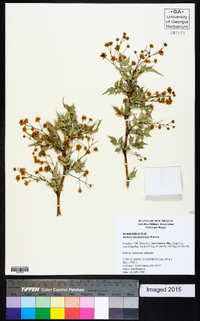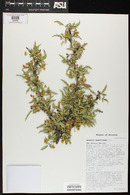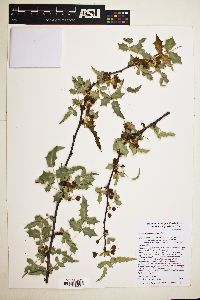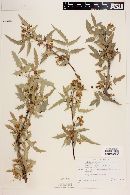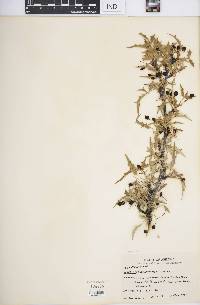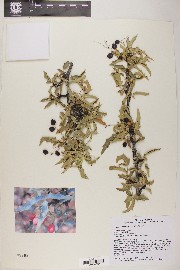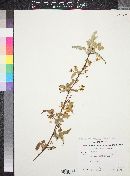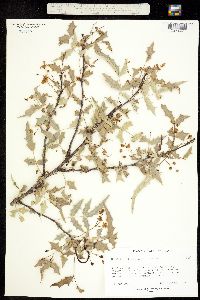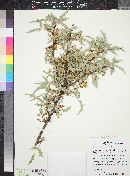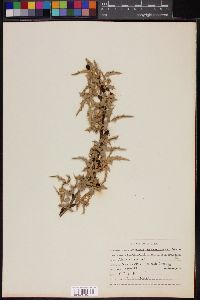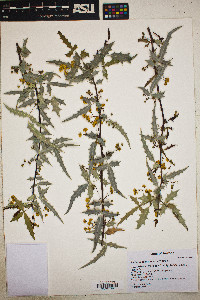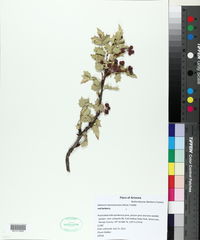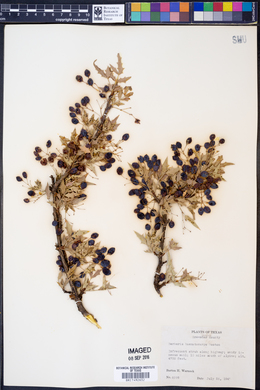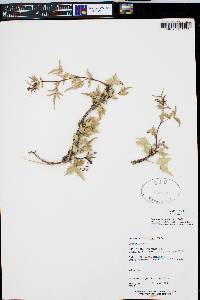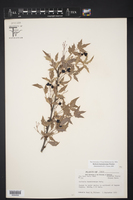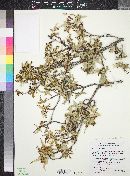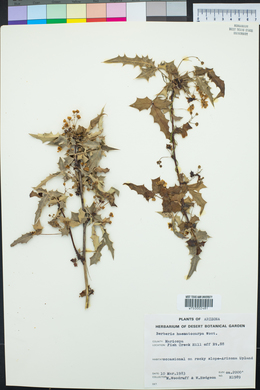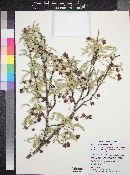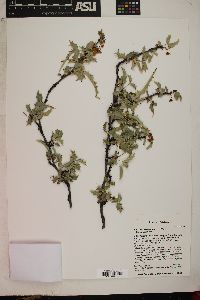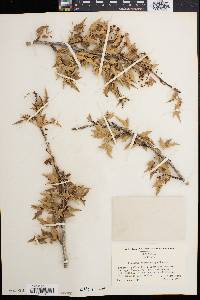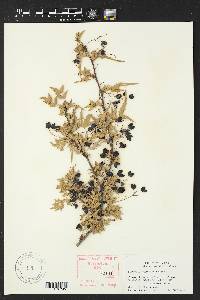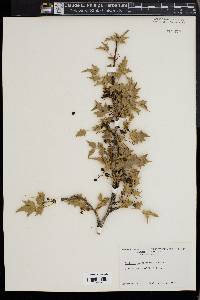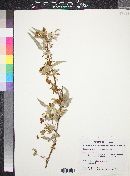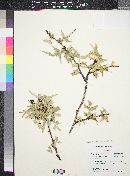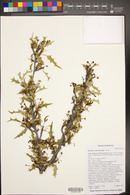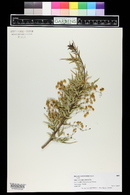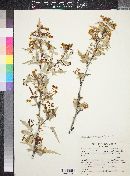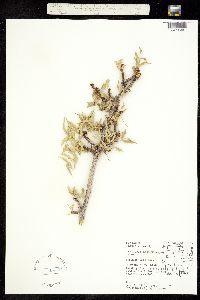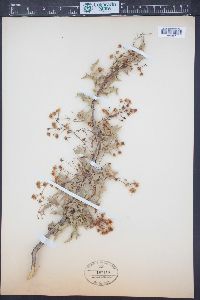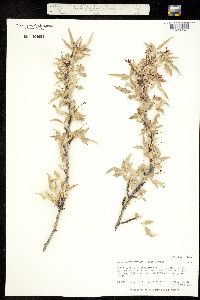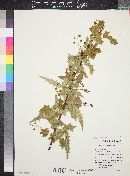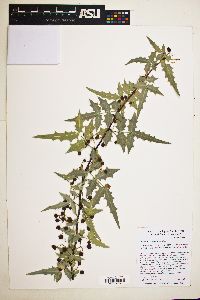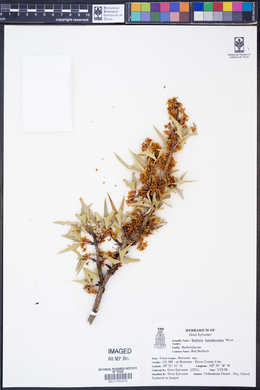
|
|
|
|
Family: Berberidaceae
bloodberry barberry, more...Red Oregon-Grape, red barberry, red mahonia (es: algerita)
[Berberis haematocarpa Wooton] |
Shrubs , evergreen, 1-4 m. Stems ± dimorphic, with elongate primary and short or somewhat elongate axillary shoots. Bark of 2d-year stems grayish purple, glabrous. Bud scales 2-4 mm, deciduous. Spines absent. Leaves 3-9-foliolate; petioles 0.1-0.5 cm. Leaflet blades thick and rigid; surfaces abaxially dull, papillose, adaxially dull, glaucous; terminal leaflet stalked in most leaves, blade 1.5-3.8 × 0.5-1.1 cm, 2-5 times as long as wide; lateral leaflet blades oblong-ovate to ovate or lanceolate, 1(-3)-veined from base, base acute to obtuse, rarely subtruncate, margins undulate or crispate, toothed or lobed, with 2-4 teeth 1-4 mm high tipped with spines to 1.2-2 × 0.2-0.3 mm, apex narrowly acute or acuminate. Inflorescences racemose, lax, 3-7-flowered, 1.5--4.5 cm; bracteoles membranous, apex acuminate. Flowers: anther filaments without distal pair of recurved lateral teeth. Berries purplish red, glaucous, spheric or short-ellipsoid, 5-8 mm, juicy, solid. Flowering winter-spring (Feb-Jun). Slopes and flats in desert shrubland, desert grassland, and dry oak woodland; 900-2300 m; Ariz., Calif., Colo., Nev., N.Mex, Tex.; Mexico (Sonora). Typical populations of Berberis haematocarpa (with narrowly ovate or lanceolate leaflets and small, juicy, deep red berries) and B . fremontii (with ovate or orbiculate leaflets and large, dry, inflated, yellowish or brownish berries) are easily distinguished. These characteristics are not always well correlated, however, and intermediate populations, showing different combinations of leaflet shape and berry size, color, and inflation, are known. Berberis haematocarpa is susceptible to infection by Puccinia graminis .
Plant: Shrubs, to 3 m tall Leaves: odd-pinnate, 3-20 cm long; leaflets (3-)5-7, (if trifoliolate, then the ultimate leaflet stalked and the petiole jointed above base), thick, rigid, dull gray-green, very glaucous, narrowly oblong-ovate or oblong to lanceolate, sessile, 1.5-11 cm long; terminal leaflet longer than lateral ones, sessile or on a stalk up to 3 cm long; veins obscure; teeth of leaflet margin 2-4 pairs, 3-5 mm long, including a spine 1-2 mm long INFLORESCENCE: openly umbellate-racemose, 5-7-flowered; pseudopedicels 1-2 cm long; bracts 1-3 mm long; bracteoles 2, 1-2 mm long, both appressed to the calyx, or one appressed to the calyx, the other 0.5-1.0 cm below it Flowers: sepals 9; outer sepals 4-6 mm long, broadly ovate; median and inner sepals 3-5 mm long, obovate; petals obovate, 2-4 mm long; stamens 3 mm long; filaments bearing two lateral teeth at apex Fruit: FRUITS berries, ovoid-globose, red, 7-8 mm long; SEEDS ellipsoid to clavate, purple, 3-4 mm long Misc: Slopes and mesas; 900-1500 (-2300) m (3000-5000 [-7500] ft); Feb-May REFERENCES: Laferrière, Joseph E. 2001. Berberidaceae. J. Ariz. - Nev. Acad. Sci. Volume 26(1). FNA 1997, Felger 2000, Kearney and Peebles 1979 Common Name: red barberry Duration: Perennial Nativity: Native Lifeform: Shrub General: Evergreen shrubs 1-4 m tall. Young stems smooth with grayish purple bark, older stems with rough and fissured bark. Leaves: Alternate and petiolate, the petioles to 0.5 cm; leaves mostly evergreen, thick and rigid, blue-green and smooth on the uppermost side, papillose underneath, pinnately compound with 3-9 leaflets; leaflets spine-tipped and with 2-4 teeth on the undulate to crispate margins. Flowers: Yellow, in small, lax, 3-7 flowered racemes; flowers subtended by membranous bracteoles with acuminate tips; flowers 3-merous, 3-8 mm. Fruits: Berries purplish red, smooth, spheric, juicy and firm, 5-8 mm. Ecology: Found on slopes and flats in desert shrublands, grasslands, and oak woodlands, from 3,000-7,500 ft (914-2286 m); flowers February-June. Distribution: sw US from s CA and s NV to CO, NM, w TX; south to Sonora, MEX. Notes: This spiny-leaf shrub is common at the middle elevations in Arizona, particularly below the Mogollon Rim. The keys to identify this species are the bright red berries, and the terminal leaflets being long and narrow, mostly 2-5 times as long as wide. B. fremontii has yellow to blue-black berries and shorter terminal leaflets. Ethnobotany: Delicious jelly can be made from the berries. Etymology: Berberis is the Latinized form of the Arabic name for the fruit, haematocarpa refers to having blood-red fruits, from the Greek haima, blood, and karpos, fruit. Synonyms: Mahonia haematocarpa Editor: LCrumbacher 2011, AHazelton 2015 |
|
|
|
This project was made possible in part by the Institute of Museum and Library Services [MG-70-19-0057-19].
Powered by Symbiota

